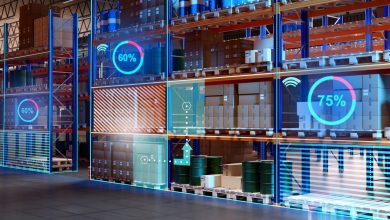Warehousing has entered a new era where efficiency, speed, and adaptability are no longer just operational goals, but baseline expectations. Now that supply chains have grown more complex, businesses are turning to smart technologies to stay competitive and meet tighter delivery windows. Artificial intelligence (AI), in particular, is beginning to reshape core warehouse processes in ways that were difficult to imagine just a few years ago.
While robotics and automation often steal the spotlight, it is the humble yet indispensable pallet trucks that are quietly undergoing some of the most significant changes. These once-manual tools have become a focal point in the digital transformation of warehousing, playing a much larger role in driving operational success.
This article explores how AI is elevating the role of pallet trucks from background tools to critical enablers of smarter, more responsive warehouse ecosystems. Here are some insights that everyone whose work involves warehousing operations needs to know.
From Manual to Intelligent: The Evolution of Pallet Trucks
In the early days of warehouse logistics, pallet trucks were simple tools designed to move heavy loads across short distances. Operated entirely by hand, they offered a basic but effective solution for transporting goods within confined spaces. For decades, their design and function remained largely unchanged, proving reliable but often limited in scope.
The first major shift came with the arrival of electric pallet trucks, which brought powered movement and reduced the physical strain on operators. These enhancements, while valuable, did not significantly alter the nature of the task. It was the emergence of automation and artificial intelligence that marked a true turning point. The role of pallet trucks has since evolved from passive carriers to intelligent agents capable of interacting with warehouse systems, learning from data, and adapting to the needs of a dynamic environment.
This evolution reflects a broader change in warehouse thinking, where precision and adaptability matter as much as brute force. Business owners’ understanding of how AI enables this shift should set the stage for greater appreciation of the strategic importance of these once-unassuming devices.
How AI is Powering the Revolution
Artificial intelligence fundamentally reshapes how warehouse tools operate, moving beyond simple upgrades. Rather than relying on pre-set routines, today’s systems can learn, respond, and optimise in real time. This shift is especially evident in how AI is being applied to pallet trucks within smart warehousing environments.
Let’s examine the specific ways AI is enabling these machines to perform with greater intelligence and adaptability:
Real-Time Decision-Making for Safer, Smarter Operations
A split-second delay can be costly in a high-throughput warehouse. This is where AI-driven pallet trucks offer a critical advantage. By continuously analysing data from onboard sensors, these machines can respond to potential hazards and unstable loads by adjusting their actions instantly without waiting for human instruction. For instance, if an unexpected obstacle appears in a high-traffic zone, the system can slow down or reroute to avoid collision, reducing the likelihood of accidents and product damage.
The benefits go beyond safety. Real-time responsiveness helps maintain the pace of operations even when conditions change. This level of autonomy allows businesses to reduce downtime and limit handling errors, contributing to smoother, more dependable operations overall.
Thanks to the intelligent judgement executed by these machines, warehouses are becoming less reactive and more resilient, allowing them to keep moving without compromise even in unpredictable settings.
Dynamic Route Optimisation and Traffic Management
Warehouse layouts are rarely static. Aisles become blocked and priorities shift, often causing once-clear paths to become congested. Traditional pallet trucks, whether manual or basic electric models, cannot adapt to these changes on the fly. AI, however, brings in route optimisation capabilities that mirror those found in autonomous vehicles.
Equipped with mapping algorithms and real-time data feeds, AI-enabled pallet trucks select the most efficient paths based on current conditions. This might mean taking a longer but faster detour when a frequently used corridor is temporarily crowded, or scheduling staggered routes to avoid equipment traffic. Some systems can even coordinate with other autonomous units to prevent bottlenecks and streamline internal flow.
These routing efficiencies not only reduce transit times but also contribute to longer equipment lifespan by minimising unnecessary stops and turns. Ultimately, smarter routing brings greater predictability to what was once a chaotic environment.
Adapting to Real-Time Warehouse Conditions
Not all warehouse changes are visible on a map. Seasonal fluctuations in demand, last-minute order changes, and shifting storage configurations all require systems that can think beyond fixed programming. AI allows pallet trucks to respond dynamically, considering physical layout as well as workflow needs.
When integrated with warehouse management systems (WMS), AI-powered pallet trucks receive and interpret updates in real time. If certain stock-keeping units (SKUs) need to be retrieved more frequently due to a sales surge, routes and task schedules can be reallocated instantly to prioritise those movements. And when a temporary storage zone becomes overloaded, the system can direct vehicles to alternate areas without manual input.
This level of adaptability helps reduce operational bottlenecks and supports more accurate, demand-driven logistics. The ability to act on live data rather than static rules ensures that warehouse activity remains aligned with business priorities even as they change by the hour.
Data Integration and Predictive Maintenance
Beyond movement, intelligence extends to how machines understand their own health. AI-enabled pallet trucks constantly monitor metrics, from battery status and motor temperature to usage frequency. When combined with historical insights, this information allows the system to flag issues before they result in breakdowns, triggering alerts or maintenance schedules automatically.
More importantly, these trucks do not operate in isolation. They are part of a wider digital ecosystem where operational data is shared with warehouse managers and backend solutions. This enables pattern recognition at scale, providing crucial information for procurement, resource allocation, and performance benchmarking.
Countries like Singapore are investing heavily in AI infrastructure to support smarter, data-driven industries. The Singapore Economic Development Board recently announced an SGD 500 million allocation to expand access to high-performance hardware, enabling logistics and warehousing technologies, such as AI-powered pallet trucks, to benefit from faster analytics and tighter integration with enterprise systems.
Indeed, artificial intelligence has reshaped the role of pallet trucks, elevating them from manual tools to intelligent, adaptable assets within smart warehousing environments. As these machines continue to evolve, their impact will extend beyond efficiency gains, from shaping how warehouses respond to change and manage data to future-proofing operations. For businesses looking to stay competitive in a rapidly shifting logistics landscape, it’s now a must to embrace AI-driven technologies for the very foundation of what comes next.



